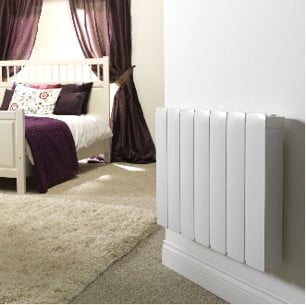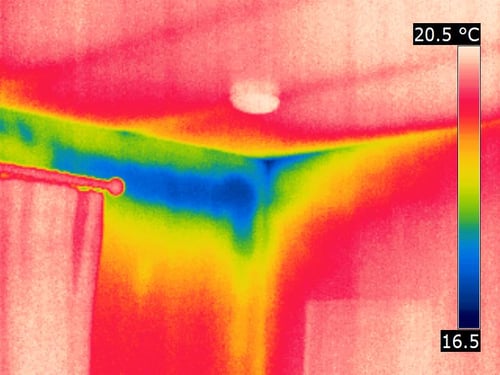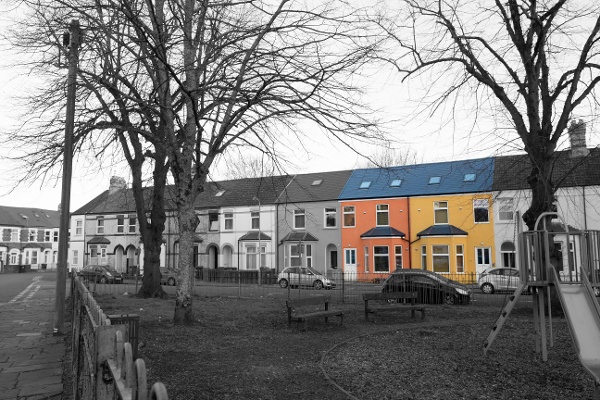
There are many innovations transforming building services driven mainly by the huge challenge of achieving Net Zero targets. In a series of articles, we look at these...
In this article we look at the impact of psi-values and why they matter. Psi-values are a measure of the heat loss of a junction between two fabric elements, eg floor and external wall. These junctions are called non-repeating thermal bridges.
Previous iterations of the UK Building Regulations have raised awareness of the importance of fabric u-values and air tightness, the incoming revision is set to sharpen the focus on the ‘non-repeating’ or ‘linear’ thermal bridges that occur at junctions between fabric elements. The easy option of using Accredited Construction Details (ACD) will disappear from SAP as a new version is introduced next summer. This will force developers to more strongly consider junctions when choosing their building fabric or to have the heat loss properties of their junctions evaluated by trained specialists in order to avoid having to assume worst-case default heat losses.
 What is a ‘non-repeating’ thermal bridge?
What is a ‘non-repeating’ thermal bridge?Buildings have junctions where two types of fabric element meet such as the wall and the roof or the floors or window frames. For a building to have structural integrity, there must be sections of the junctions where the insulation is replaced with structural components which tend to have a relatively high thermal conductivity. For example, a block of concrete at a junction instead of continuous insulation around the junction. These discontinuities in the insulation layer around junctions cause relatively high local heat loss referred to as non-repeating thermal bridges.
To model the energy performance of a building in SAP we use u-values and psi-values which account for the heat loss from the exposed areas of external fabric elements (and their respective repeating thermal bridges) and the junctions respectively. So, lower u-values and psi-values mean that the building fabric is more insulating and there is less heat loss.
If only u-values are considered then the total heat loss of a building would be underestimated. Psi-values must be used alongside u-values to account for the relatively high heat loss at junctions and calculate a more realistic energy performance.
Worst-case default psi-Values (Appendix K) are assumed in the assessment if approved thermal bridging schemes haven’t been adopted because this indicates that the developer has not considered methods for reducing the heat loss through junctions. This severely negatively impacts the SAP assessment so developers tend to avoid this by building to freely available junction details, most prominently Accredited Construction Details (ACD). These provide predetermined junction designs for specific construction types (e.g. timber, masonry and steel). This means that ACD psi-values (also in Appendix K) may be used in the assessment which are better than the defaults (as shown in Table 1).
The ACD scheme has been criticised as being open to abuse by developers and of simply being outdated. SAP 10 will remove the option to use ACD, forcing developers to take one of two alternative approaches in order to avoid the defaults. The first is to use certified make-ups from manufacturers which have corresponding predetermined psi-values. The second is to have their own bespoke psi-values calculated by an assessor who has specialist training.
In summary, the two key changes to Appendix K from SAP 9 (or SAP 2012) to SAP 10 are the removal of the ACDs and adjustments to some of the default psi-values. These changes tend to give rise to a significant increase in the default y-value which is a building specific sum of the applied psi-values expressed per unit of surface area. The y-value can be directly compared with the u-values because it has the same units of W/m2K which allows the heat loss from the junctions to be evaluated as a proportion of the total heat loss of a building.
Examples
Table 1: Psi-vales for junction types in SAP9 and SAP10 and for different fabrics
|
Junction with external wall |
Psi-values (W/mK) |
|||||
Reference code |
Type |
SAP 9 |
SAP 10 |
MMC |
||
|
Appendix K Default |
ACD |
Appendix K Default |
Basic Kingspan TEK building system |
Durisol D300 Block |
||
|
E3 |
Sill |
0.080 |
0.050 |
0.100 |
0.030 |
0.019 |
|
E5 |
Ground floor |
0.320 |
0.160 |
0.320 |
0.060 |
0.050 |
|
E16 |
Corner |
0.180 |
0.090 |
0.180 |
0.050 |
0.002 |
Table 1 above compares the Appendix K psi-values for three junction types for SAP9 and SAP10, and for two different fabrics which use modern methods of construction (MMC). Clearly the ACD are better than the defaults in either SAP version, so it can be seen why removing them as an option would get the industry talking. The very low values offered by both MMC fabrics show the value in selecting a good product and getting accurate psi-values.
The results of our SAP assessments on a standard two storey detached house with different fabrics and sets of psi-values are summarised in table 2.
Table 2: SAP assessment Psi-value results for standard two storey detached house
Fabric Performance |
Annual CO2 emissions per unit area (kg/m2) |
||
|
Psi-values |
Reduction |
||
|
SAP9 ACD |
MMC Durisol |
||
|
SAP 10 compliant |
10.35 |
8.8 |
15.0% |
|
SAP 9 compliant |
10.74 |
9.21 |
14.2% |
Table 2 shows that as expected, the CO2 emissions decreased when the psi-values for an MMC Durisol fabric were used instead of those for the SAP 9 ACD, by at least 14%. Most notably, there was a larger emission reduction from ACD to MMC when the SAP 10 compliant building fabric was used, because the psi-values have a stronger influence on the overall performance when other properties of the building fabric, such as u-values and air tightness, have improved. Therefore, more emphasis should be placed on the minimisation of psi-values in order to improve the SAP ratings of buildings with high quality fabrics.
If you have any further questions on Psi values or any other element of building performance modelling, please contact the team by filling in the form at the bottom of the page.
If you are interested in talking to our energy consultants about a specific project book an appointment below:
Or download our free whitepaper on how to build energy efficient homes;

There are many innovations transforming building services driven mainly by the huge challenge of achieving Net Zero targets. In a series of articles, we look at these...

Our Senior Data Scientist, Dr Kat Kelly recently showed that rented flats using variable ventilation and direct electrical heating under Atamate smart control delivered...